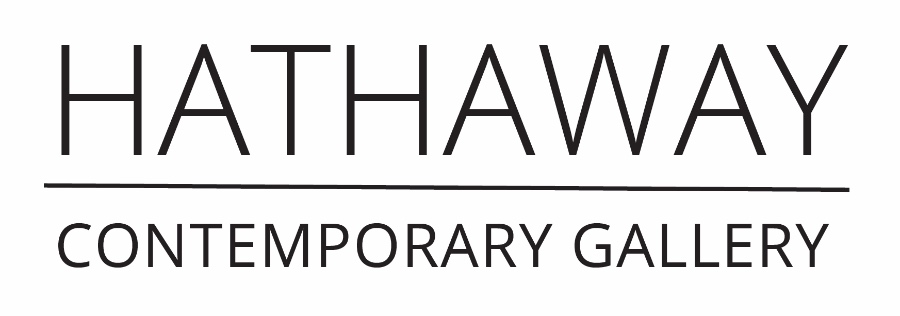Let's Face It
Let's Face It
Karen Schwartz
On View: January 25 - March 7, 2020
Public Viewing Hours: Tuesday - Saturday 10am - 2 pm or by appointment
HATHAWAY is proud to present Let's Face It, an exhibition of new paintings by Karen Schwartz. This solo exhibition is Schwartz's third with HATHAWAY.
Schwartz is an Atlanta and New York City based visual artist working primarily in painting and drawing in a range of media. She is represented by Hathaway Contemporary Gallery in Atlanta. Her solo and group exhibition history in New York includes Life on Mars Gallery in Brooklyn. Karen’s mixed media paintings and drawings have been exhibited and privately collected around the country and internationally. Karen’s portrait of Eleanor Roosevelt can be seen at the New York Historical Society, where it was first exhibited in the launch of their Women and History Center. A clinical psychologist, Karen finds that psychotherapy practice informs her artwork in fascinating, sometimes less than conscious ways, and that her studio practice offers curious insights into her work in psychotherapy.
For me the most compelling subjects to paint have always been the human face and figure. I am drawn in by the nuances of facial expression and subtle, nonverbal tells that betray the complexity of subjective, emotional experience. Perhaps these visual details of self-expression afford scaffolding for my own feelings, empathy, and identifications. In any case, my preoccupation with them is not surprising given my other practice, psychoanalytic psychotherapy.
Painting, like psychotherapy, is a way of making sense. I owe to my psychotherapeutic practice a faith in free association and unconscious meanderings; both guide my process as painter and support my instinct to pile images on top of images to get at unanticipated meanings. I think of painting and psychotherapy as dialogic processes. The exchange between me as painter and the marks I make on a surface does not involve verbal mediation, but generates form in a way that may be regarded as analogous to the therapeutic dialogue. As I paint, I see recognizable form come into being as the emerging artwork takes on an existence of its own and talks back to me. The painting tells me what to do next. This nonverbal exchange holds an interplay of what is consciously known to me and perhaps intentionally expressed by my subject AND what is only implicitly intended or known until given visual representation.
What I find distinctive and essential about painting is that it is action, a physical way to deepen engagement with a visual point of interest. Often, a facial detail snags my attention and affords entry. I lose my conscious editor in the wordless process of trying to make sense of what I see. The effort to capture visually what may be a superficial detail, or a defining one, and the task of contextualizing that detail in relation to other visual elements, affords a deepening that bypasses verbal processing. I get to know the face I am looking at and seeing in some ways for the first time. Visual representation renders what was implicit—an expression, attitude, or motivation—explicit.
The process of finding the face through visual, sensual, and physical engagement is a welcome counterpoint to making meaning through verbal exchange. Looking and seeing are other ways to come to know, ways of touching and feeling contour with ones’ eyes. The physical acts of painting convey touch through gesture and involve marks that record the movements that made them. My initial gestures tend to be tentative and large, made with sprayed paint, fat colorless blending sticks, and other means of staining the linen, canvas, or paper surfaces. As I gain certainty, my marks become more identifiable as lines and more explicit in what they are suggesting. I rely heavily on line to delineate form and to express energy. Many of my paintings are essentially drawings in paint.
I must be compelled by a face to spend the time with it required to paint it. I believe faces that draw me in, whether they are notorious ones or unknown, do so because they convey the complicated, multiple aspects of personality that we call “character.” A friend said, “You paint peoples’ insides.” I am very happy with that attribution.
Fiction writer Alice Hoffman said in an artist talk that she generates plot by putting unlikely characters together to see what happens. That is how I have selected works for this show. And what happened is I realized how this unlikely cast of characters all share rich, complex, sometimes deliberately orchestrated selves. I hope you can see it in their faces.

